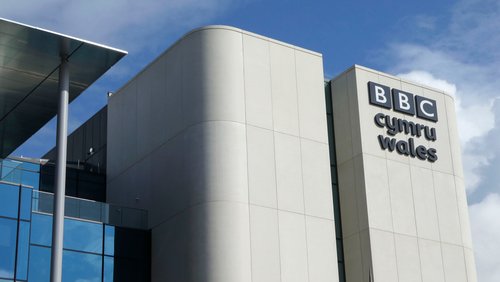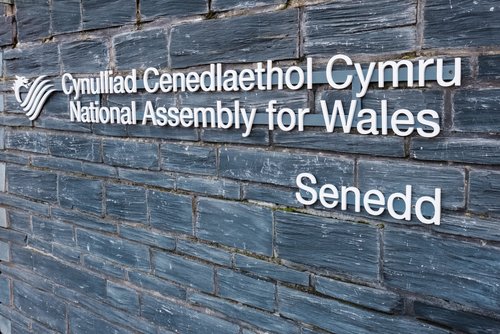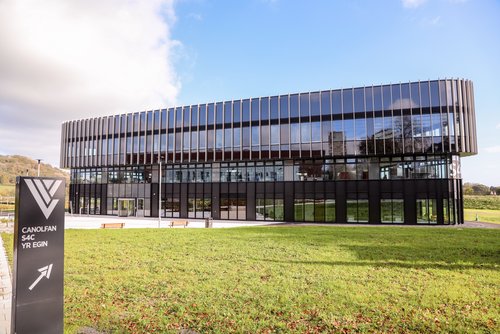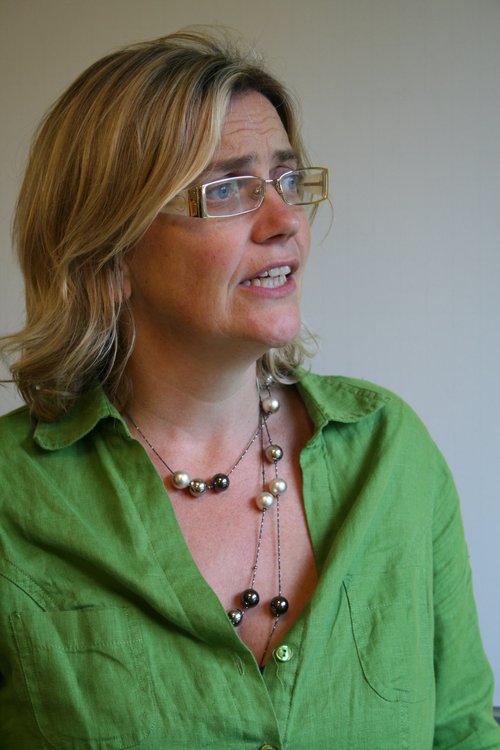Minority language media and the COVID-19 pandemic – the case of Welsh. An interview with Prof. Elin Haf Gruffydd Jones.




A series edited and conceptualised by Dr. Sergiusz Bober and Craig Willis.
In the first of a new series of expert interviews in the field of minority language media across Europe, Prof. Elin Haf Gruffydd Jones of the University of Wales Trinity Saint David provides us with an in-depth overview of Welsh media during the COVID-19 pandemic. As she explains, Welsh language media organizations have acted quickly during COVID-19 to inform and connect communities across Wales. New conversations, content and groups have been created on social media in Welsh too. But faced with the impending economic downturn, exacerbated by Brexit, there are challenging times ahead for the sector.
We posed a series of questions to Elin, covering a wide range of angles related to the COVID-19 crisis in the context of minority language media. This commences with an overview of the institutions / outlets of relevance which publish content in Welsh.
As an introduction, could you please summarise the minority language media (MLM) situation in your linguistic sphere?
The Welsh language has a presence, to different degrees, across a number of media organizations.
Some of these organizations are so-called ‘dedicated MLM’ or minority language-specific organizations, where the main mission is to produce media content in Welsh. Others may have a shared linguistic mission, or indeed where English is the main language but some content is produced in Welsh.
In terms of geographical remit, some of these organizations are based in Wales while others are UK-wide organizations. Broadcasting remains a ‘reserved power’ in the UK, which means that it is not devolved. Other kinds of media activity, for example for online news services and magazine publishing, are within the competencies of the Welsh Government.
The vast majority of media content in Welsh is produced with at least some public investment and the main broadcasters operate under conditions of public service broadcasting. The broadcasting sector is by far the most significant in terms of employment, self-employment and economic impact.
BBC Cymru Wales is very significant player on the Welsh language media scene, producing content and reaching audiences across a range of platforms. BBC Radio Cymru – the main radio station in Welsh – broadcasts daily from 5am to 12pm on FM, online, on DAB and through the BBC Sounds player. BBC Radio Cymru 2 provides lighter options for parts of the day, such as breakfast time and broadcasts on online platforms. BBC Cymru Fyw is available as an app and online platform, providing news and sport articles, magazine-style information, features and quizzes. BBC Cymru Wales produces 10 hours per week of television programming for S4C, including the news service and daily soap Pobol y Cwm.
S4C broadcasts over 6,500 hours per year across the television genres, commissioned from a range of production companies. Its programmes and content are available online, including through its own player, S4C Clic and the BBC iPlayer on a range of platforms. Its short-form content aimed at younger audiences is branded as Hansh. This focusses on comedy and factual and is available on a range of platforms including Facebook, Twitter, Instagram, Youtube etc. Its children’s content is branded as Cyw for Pre-school and Early Years and Stwnsh for older children.
Golwg is a weekly magazine – created in 1988 – and reaches readers through subscription, sales and online. Golwg 360 is a daily news service available online since 2009 and Bro360 is a two-year initiative in hyperlocal digital media, focussing on two areas in the pilot stage, Ceredigion and Arfon, both in areas where Welsh is strong as a community language.
Local or hyperlocal newspapers were first established in Wales in the 1970s as papurau bro (locality newspapers). There are some fifty papurau bro all over Wales – some cover just a few villages, others four or five substantial towns or a whole city. As monthly publications of mainly ‘soft’ local news, they provide a combined circulation of some 56,000 per month. The digital presence is very uneven across the papurau bro, and they remain very much a physical, printed phenomenon.
Welsh is used for discussion on Twitter as well as on Facebook, Instagram and other social media. Nation.Cymru was established in 2017 without public funding and carries occasional articles in Welsh. Y Cymro and Barn are published monthly and carry news and current affairs.
How has the COVID-19 pandemic affected the reporting of the MLM in your area and has there been any effect on readership / viewing figures?
The media of minority languages have been described as ‘media of proximity’ (Moragas Spà & Garitaonandia, 1995) due to the close connection between the producers and the consumers in these contexts, even in the decades before social media. In Wales, a content analysis study (see Jones, in Cormack & Hourigan, 2007) concluded that S4C covered all parts of Wales during the course of a single week of television broadcasting. These points of contact included news report, vox pops, daily magazine programmes, factual and light entertainment.
One small example of this approach in action during the COVID-19 lockdown period is that footage of the weekly clapping at 8pm was regularly shown on Newyddion (weekday 30 minute news programme) from several different neighbourhoods – small villages as well as cities – across Wales as people showed their appreciation of health service and other key workers.
Similarly, the daily magazine programmes, Heno and Pnawn Da have been inviting viewers to send in video clips of themselves undertaking ‘lockdown activities’, including ‘Gôl-ona’ - the best back garden goals. This user-generated content is then voiced-over with professional football commentary and the best goal is chosen by well-known Welsh sporting personalities.
The consumption of news produced by broadcasters in Wales increased during the lockdown period: Newyddion on S4C, BBC Wales Today and ITV Wales at Six all report higher numbers of audiences for their content across the platforms. Audiences in Wales have turned to the public service broadcasters for many reasons, not least to access the most detailed information on the prevalence of the COVID-19 in their localities but also to be informed of the actions of Welsh Government, as well as those of the UK Government, as the two governments have not implemented the same measures during the same periods of lockdown.
The early period of lockdown saw much debate in the Welsh language media on the issue of second home-owners accessing their property and the additional demand that this places on health services that are funded according to the ‘winter’ population. With lockdown restrictions easing, the focus has shifted towards opening up for travel and tourism, as well as the longer term economic impact on all sectors of the economy. A key area of debate throughout the epidemic has been on the differences between Wales and England – see below.
How has the lockdown / social distancing measures affected other covered content in MLM?
COVID-19 restrictions have meant that television production has decreased and in some genres it has come to a halt. Sporting activities of all kinds are still postponed and cannot be televised. Drama production has all but ceased due to COVID-19 restrictions (at the time of writing). In the case of Pobol y Cwm the longest running soap produced by the BBC and broadcast on S4C, episodes were reduced to two a week from the end of March 2020 (running on episodes recorded before the lockdown). S4C broadcast its first COVID-drama, Cyswllt, at the end of April 2020.
Journalists and other broadcasters providing public service broadcasting are considered key workers and must comply with the legal requirements as set out by the Welsh Government when filming in Wales.
BBC Radio Cymru has been broadcast from the presenters’ and the contributors’ own homes.
The summer is of course a season of festivals and cultural events and Wales is no exception. This year many of these have been cancelled or postponed by 12 months, including the National Eisteddfod, a multi-art cultural festival usually held for eight days in August, attracting at least 150,000 visitors per year of all ages. The impact of this on the media in the Welsh language is significant as it commands many hours of radio, television and online content as well as on the wider cultural sector, such as music, theatre, publishing etc.
Daily magazine programmes Heno and Prynhawn Da have continued on air with some presenters socially distanced in the studio and most contributors joining in through Skype/Zoom etc. The weekly programme Ffermio that focusses on the countryside and agriculture, as well as Y Byd ar Bedwar current affairs have continued throughout. Regular lifestyle programmes – such as FFIT Cymru (health and fitness) and Priodas Dan Glo (organising a wedding) have adapted their formats to what COVID-19 restrictions could permit.
How has MLM covered issues of majority-minority relations and has the situation or voice of minorities been covered in majority media?
Overall, the Welsh Government – like in Scotland – has acted with more caution for longer than has been the case in England under the UK Government, on matters such as opening or closing of schools, lifting travel restrictions, re-opening of non-essential shops, bars and restaurants etc.
With other matters, such as the furlough scheme to pay workers and the self-employed, Wales does not have powers to diverge and form its own policies but it can create additional funds to support certain economic sectors such as the cultural and creative industries.
UK based news has not always succeeded during this period in highlighting the reality that the Public Health response to COVID-19 is not uniform across the state and that Wales, Scotland and Northern Ireland have their own governments and policies on this matter. The UK Government when stating its policies does not always emphasise that they are applicable in England only. This led to some confusion and highlighted the fact that not all UK citizens are aware of the devolution that has taken place over the past 20 years.
This lack of awareness of the differences, especially on the part of people living in England, is also something that has been reported in news items, again in Wales not in England or UK broadcasting. In addition, most people in Wales consume their main news from outlets that are not Wales based – including the press – where there is very little if any recognition that things are different in Wales compared to England.
At the Welsh level, the press conferences with the First Minister and other Ministers have shown them responding to journalists’ questions in both English and Welsh. This is in order to obtain material for Welsh language audio/radio and audiovisual/television for broadcast and online platforms. These conferences are live on Facebook and other social media
In what way has the pandemic affected MLM practitioners’ day to day work and have there been any future implications discussed?
There are many concerns in the sector. Practitioners working in news and current affairs have been able to continue working, but those in other parts of the sector have not. It is estimated that about 50% of those employed in the Welsh language production sector (represented by the association TAC) are on the furlough scheme at the moment – that is not working and receiving a substitute income. There is a greater impact too, as the media production sector has important economic ties with other sectors such as hospitality and with trades such as carpentry, electrical etc.
The furlough scheme is not available to all freelancers and there are concerns for those who have recently become freelance as they may not be eligible for the scheme.
The BBC announced that it will cut 60 jobs in Wales (some 6% of the workforce) in a bid to save £4.5m. ITV advertising revenues are also down by 40%. This has an impact on the overall media landscape in Wales, where freelancers and production companies work across the two languages.
Whilst news and current affairs produced in Wales and television output in the Welsh language have become more popular during lockdown, new subscriptions to the global giants, Netflix, Amazon Prime, Disney Plus have grown tremendously during this period – by some 4.6 million households in the UK in the same period.
Television companies are uncertain when they will be able to resume drama production – not only because of government restrictions, but also because insurance companies are not prepared to insure them.
The future looks very uncertain for the audiovisual media sector that forms the back bone of the professional Welsh-language media environment.
How has social media in minority language played a role during the pandemic?
Facebook group Côr-ona (a play on words combining ‘choir’ and ‘go away’) was created in mid- March 2020 by Facebook user Catrin Jones in response to Covid-19 as a platform to upload videos of members singing. This huge success led to S4C commissioning a programme with a professional singer and presenter. The Côr-ona group has over 47,000 members.
Another popular Facebook group that uses Welsh as its main language, ‘Curo’r Corona’n Coginio (beating the coronavirus through cooking) was created by the social movement and women’s association ‘Merched y Wawr’ in March 2020 and has by now over 15,000 members, who post comments and upload photos of their culinary successes.
On a more serious note, Black Lives Mattersparked debates in social media across the world. Discussion in the Welsh-language on social media has ranged from how the slogan should be translated into Welsh, to how organizations should be making changes, focus on community responses (both positive and negative aspects), its impact on Welsh-speaking BAME people, as well as online debate on Welshness and identity as part of Tafwyl festival.
About the author:
Professor Elin Haf Gruffydd Jones has worked in the field of European minority languages for three decades, focussing on media, the creative and cultural sectors, translation and language policy and practice. A founder member of the Mercator Network, she has organised and participated in numerous conferences, research projects, study visits and written and contributed to reports, articles and books in the field. At the University of Wales Trinity Saint David, she also directs the work of Wales Literature Exchange and works closely with Literature Across Frontiers and with Wales PEN Cymru. In 2017 she was appointed member of the Council of Europe’s expert group on Media for the European Charter for Regional or Minority Languages. She serves on the Executive Committee of ELEN, she is a member of the Board of the National Eisteddfod of Wales and is Chair of Cwmni Theatr Arad Goch. She is multilingual and in addition to her native Welsh and English speaks Basque, Catalan, French, Galician and Spanish and has knowledge of German, Irish, Italian and Portuguese.



Commentaries
If you wish to write a commentary on this interview, please contact the editors Dr. Sergiusz Bober and Craig Willis.

